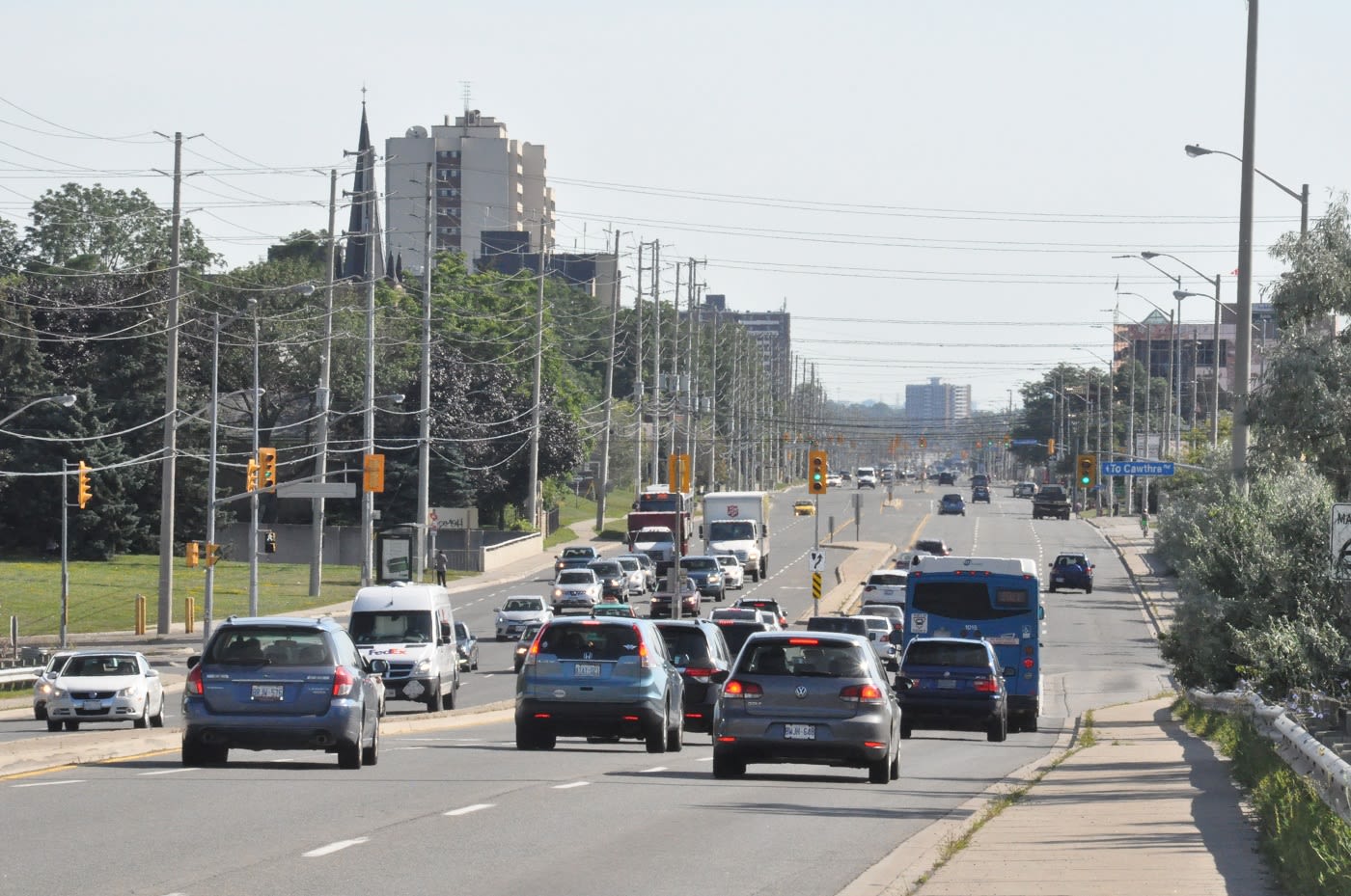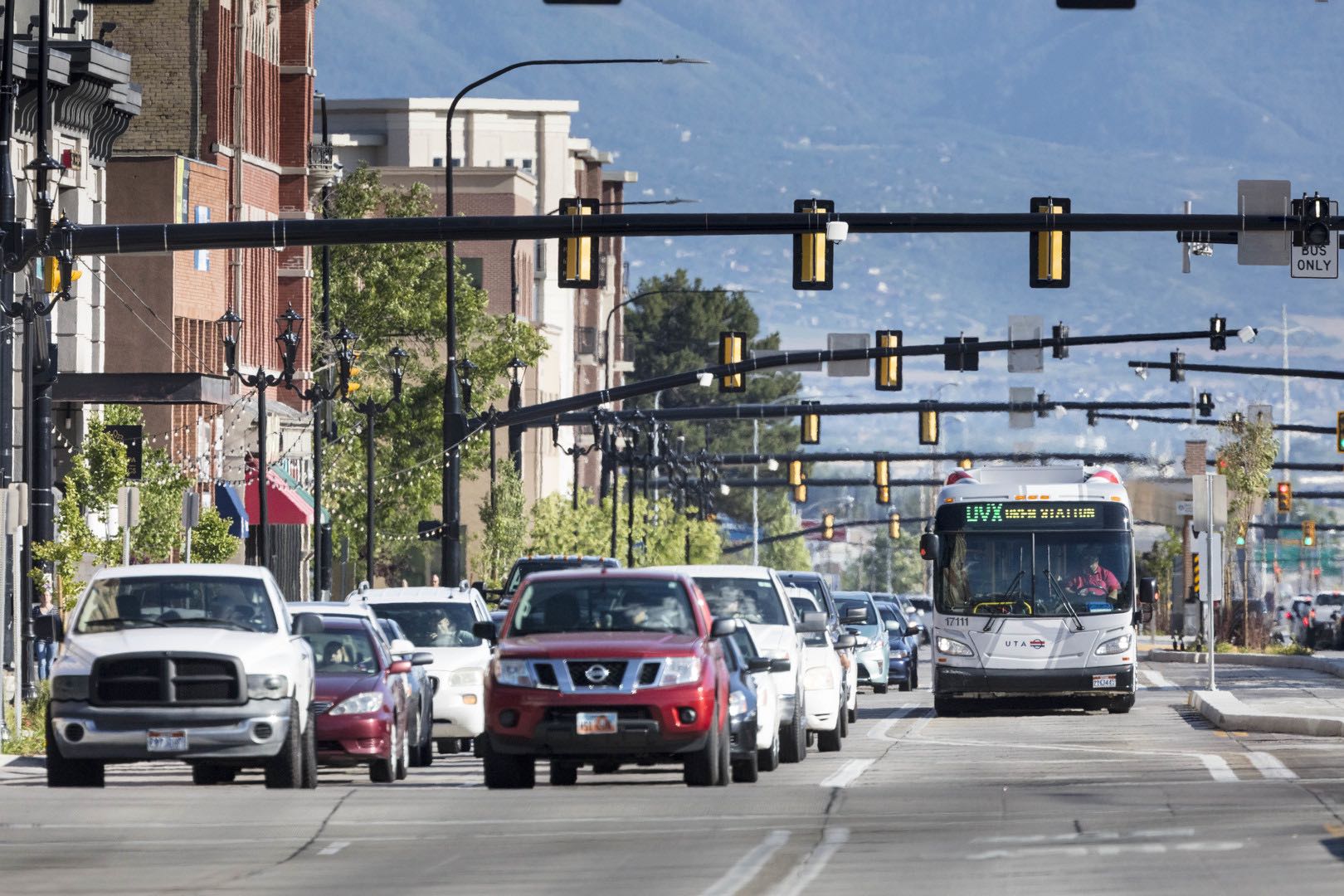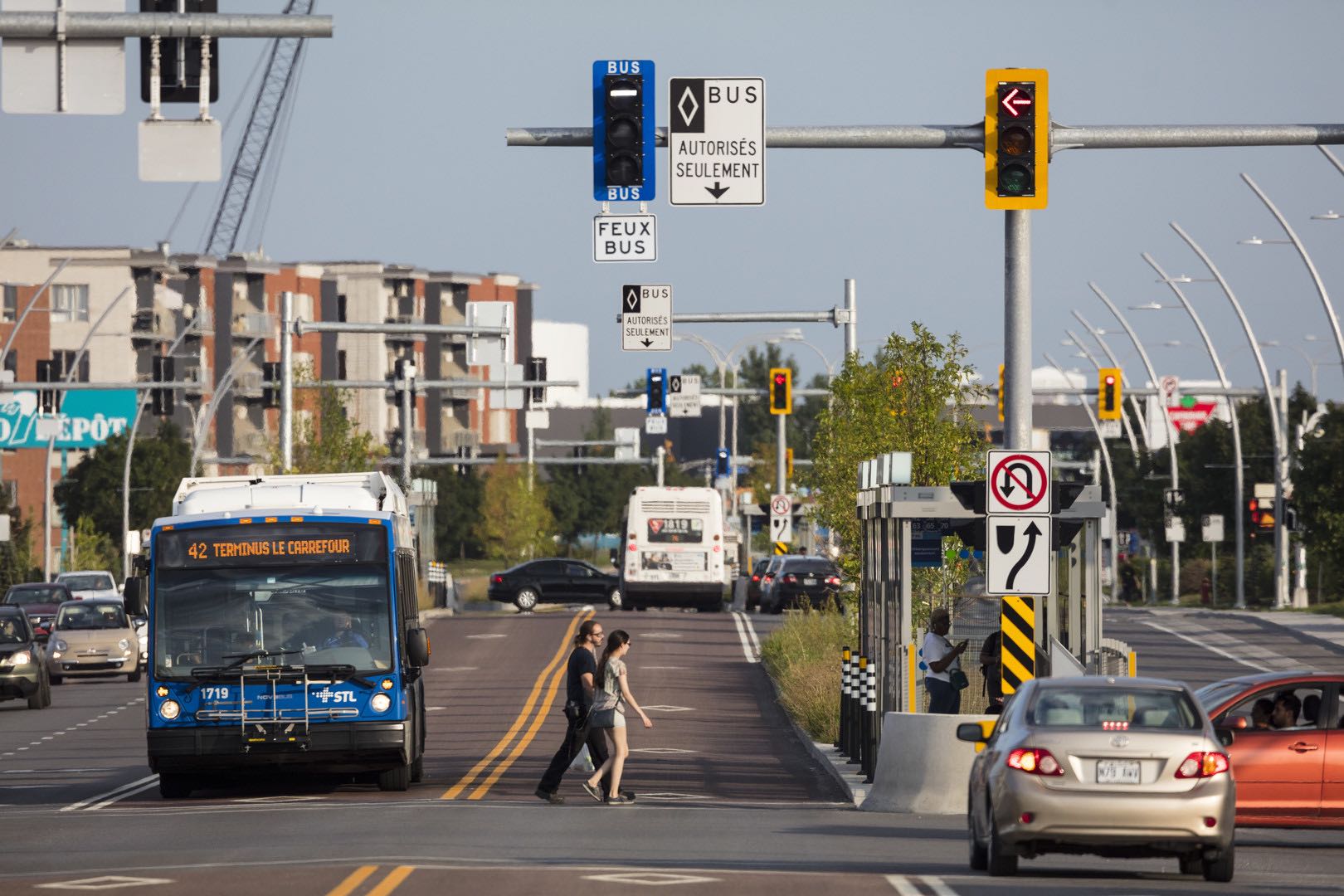
Dundas BRT
BRT provides an efficient rapid transit alternative at-grade system in several local areas (Mississauga Transitway, York Region’s VIVA) and across North America. Following are examples noted with features:
- Dedicated lanes for buses, where feasible, resulting in shorter travel times and more reliable transit service
- Frequent service with a bus every 5 minutes or less during peak hours
- Smart signals will adapt to support smoother traffic flow for all commutes – on buses, in personal vehicles, and on bicycles
- Better connections to TTC, Viva Rapid Transit, MiWay, Oakville Transit, Burlington Transit, Hamilton Street Rail (HSR), Hurontario Light Rail Transit (LRT) and GO Transit routes to allow for the use of dedicated lanes and shared stops, making it easier to travel through the region
- Reliable service with buses separated from general traffic in most areas, and greater stop spacing to allow for fast, efficient and reliable service
- Potential enhanced amenities such as service maps, next bus information, fare collection, garbage bins, wayfinding information and weather protection
Where dedicated lanes are not implemented, certain Transit Priority Measures (TPMs), including infrastructure and signal measures, can be considered to optimize conditions and contribute to shorter, more efficient rides. These include:
- Queue Jump Lanes – short, dedicated transit lanes that allow transit vehicles to bypass queues at intersections and, in combination with transit signal priority, allow buses to easily enter traffic flow in a priority position
- Transit Signal Priority – uses signal technology to provide a head start for transit vehicles at signalized intersections and can also provide additional green light time for approaching buses
Canada Line BRT - Richmond, British Columbia
Provo Orem BRT - Utah County, Utah
Le Corbusier BRT - Laval, Québec


